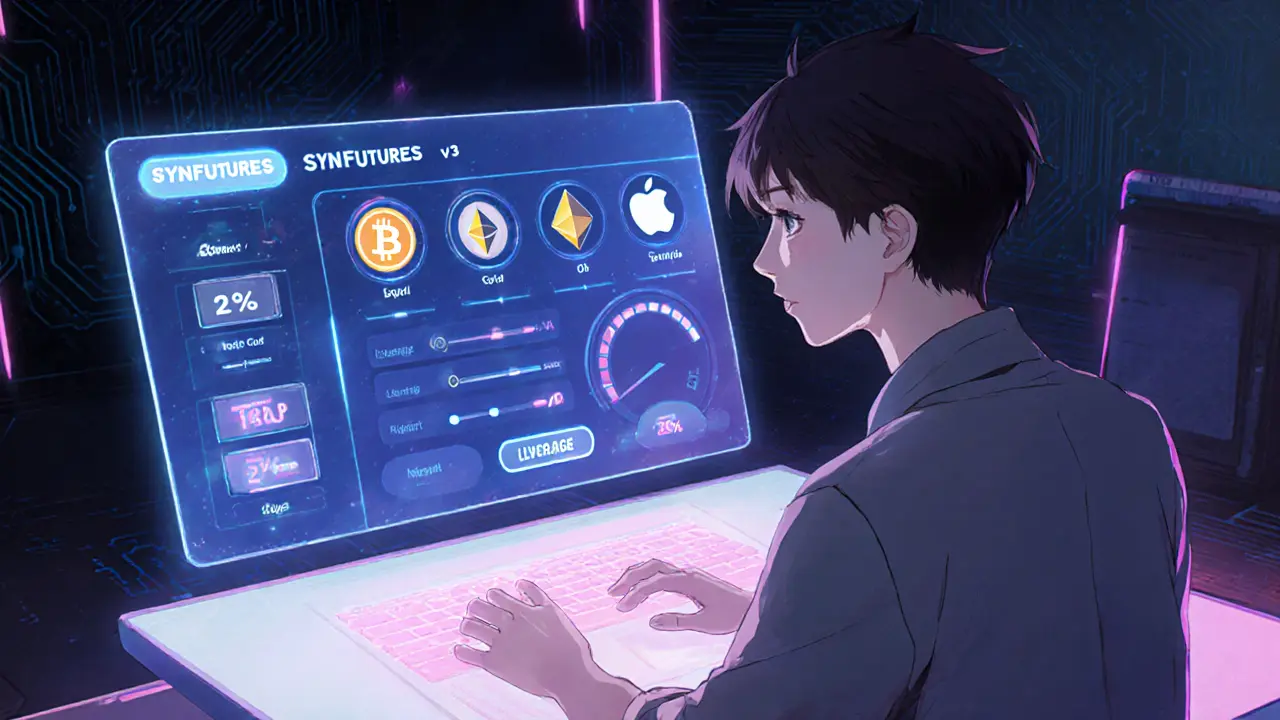SynFutures v3 Review – Everything You Need to Know
When working with SynFutures v3, a synthetic futures trading platform that lets users trade price‑linked contracts without holding the underlying crypto. Also known as SynFutures, it aims to combine low‑cost leverage with on‑chain settlement. The platform promises instant execution, adjustable leverage, and a fee structure that rivals centralized exchanges. In practice, traders get exposure to Bitcoin, Ethereum, and other assets while avoiding the custody headaches of spot trading. This review breaks down the user interface, order types, and security measures so you can decide if it fits your strategy.
Key Concepts Around Synthetic Futures
Synthetic futures, contracts that mirror the price movement of an underlying asset without requiring ownership are the core product on SynFutures v3. They differ from traditional crypto derivatives because settlement happens on‑chain, removing the need for a central clearing house. Crypto derivatives, financial instruments like futures, options, and swaps that derive value from crypto assets influence market volatility, and SynFutures v3 leverages this volatility to offer amplified gains—and risk. The platform also integrates margin trading, the practice of borrowing funds to increase trade size, which requires careful collateral management. Understanding how these three pieces—synthetic futures, crypto derivatives, and margin trading—interact helps you gauge the real cost and potential reward.
From a user‑experience perspective, SynFutures v3 offers a clean dashboard that displays real‑time price feeds, open positions, and liquidation thresholds. The order flow mirrors what you’d expect on a CEX: market, limit, and stop orders are all supported. One semantic connection worth noting is that SynFutures v3 requires on‑chain price oracles to feed accurate market data; without reliable oracles, synthetic contracts could drift from real prices. Another triple: Margin trading increases exposure to price swings, which affects liquidation risk on the platform. Finally, the platform’s fee model depends on trade volume and leverage, linking user activity directly to cost efficiency.
Security is another cornerstone. SynFutures v3 uses audited smart contracts, multi‑sig governance, and a bug‑ bounty program to keep exploits at bay. The platform also separates user collateral from operational funds, a practice common among reputable DeFi projects. This separation reduces the chance of a single point of failure, meaning your margin stays safer even if the platform faces a broader attack. In addition, the system provides real‑time alerts for margin calls, helping traders act before a position is liquidated.
What you’ll see next is a curated list of articles that dive deeper into each of these areas— from detailed fee breakdowns to step‑by‑step guides on setting up a synthetic futures position. Whether you’re a beginner curious about how synthetic contracts work or an experienced trader looking for a new playground, the collection below offers practical insights, real‑world examples, and actionable tips to get the most out of SynFutures v3.
- October 31, 2024
- Comments 19
- Cryptocurrency

